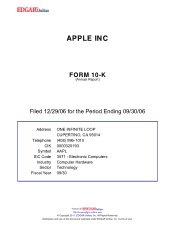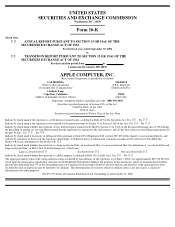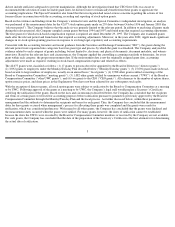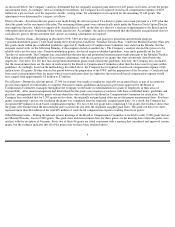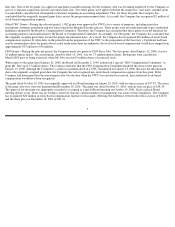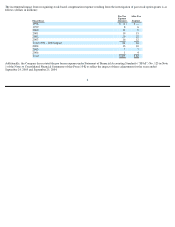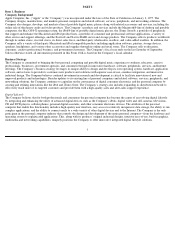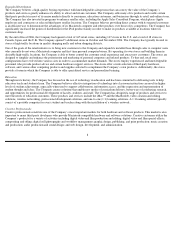Apple 2006 Annual Report Download - page 8
Download and view the complete annual report
Please find page 8 of the 2006 Apple annual report below. You can navigate through the pages in the report by either clicking on the pages listed below, or by using the keyword search tool below to find specific information within the annual report.
PART I
Item 1. Business
Company Background
Apple Computer, Inc. (“Apple” or the “Company”) was incorporated under the laws of the State of California on January 3, 1977. The
Company designs, manufactures, and markets personal computers and related software, services, peripherals, and networking solutions. The
Company also designs, develops, and markets a line of portable digital music players along with related accessories and services, including the
online sale of third-party audio and video products. The Company’s products and services include the Macintosh® line of desktop and portable
computers, the Mac OS® X operating system, the iPod® line of portable digital music players, the iTunes Store®, a portfolio of peripherals
that support and enhance the Macintosh and iPod product lines, a portfolio of consumer and professional software applications, a variety of
other service and support offerings, and the Xserve®
and Xserve RAID server and storage products. The Company sells its products worldwide
through its online stores, its retail stores, its direct sales force, and third-party wholesalers, resellers, and value-added resellers. In addition, the
Company sells a variety of third-party Macintosh and iPod compatible products including application software, printers, storage devices,
speakers, headphones, and various other accessories and supplies through its online and retail stores. The Company sells to education,
consumer, creative professional, business, and government customers. The Company’s fiscal year ends on the last Saturday of September.
Unless otherwise stated, all information presented in this Form 10-K is based on the Company’s fiscal calendar.
Business Strategy
The Company is committed to bringing the best personal computing and portable digital music experience to students, educators, creative
professionals, businesses, government agencies, and consumers through its innovative hardware, software, peripherals, services, and Internet
offerings. The Company’s business strategy leverages its unique ability to design and develop its own operating system, hardware, application
software, and services to provide its customers new products and solutions with superior ease-of-use, seamless integration, and innovative
industrial design. The Company believes continual investment in research and development is critical to facilitate innovation of new and
improved products and technologies. Besides updates to its existing line of personal computers and related software, services, peripherals, and
networking solutions, the Company continues to capitalize on the convergence of digital consumer electronics and the personal computer by
creating and refining innovations like the iPod and iTunes Store. The Company’s strategy also includes expanding its distribution network to
effectively reach more of its targeted customers and provide them with a high-quality sales and after-sales support experience.
Digital Lifestyle
The Company believes that for both professionals and consumers the personal computer has become the center of an evolving digital lifestyle
by integrating and enhancing the utility of advanced digital devices such as the Company’s iPods, digital video and still cameras, televisions,
CD and DVD players, cellular phones, personal digital assistants, and other consumer electronic devices. The attributes of the personal
computer that enable this functionality include a high-
quality user interface, easy access to relatively inexpensive data storage, the ability to run
complex applications, and the ability to connect easily to a wide variety of other digital devices and to the Internet. The Company is the only
participant in the personal computer industry that controls the design and development of the entire personal computer—
from the hardware and
operating system to sophisticated applications. This, along with its products’ original industrial designs, intuitive ease-of-use, built-in graphics,
multimedia and networking capabilities, uniquely positions the Company to offer innovative integrated digital lifestyle solutions.
7

